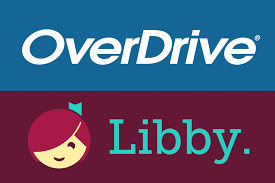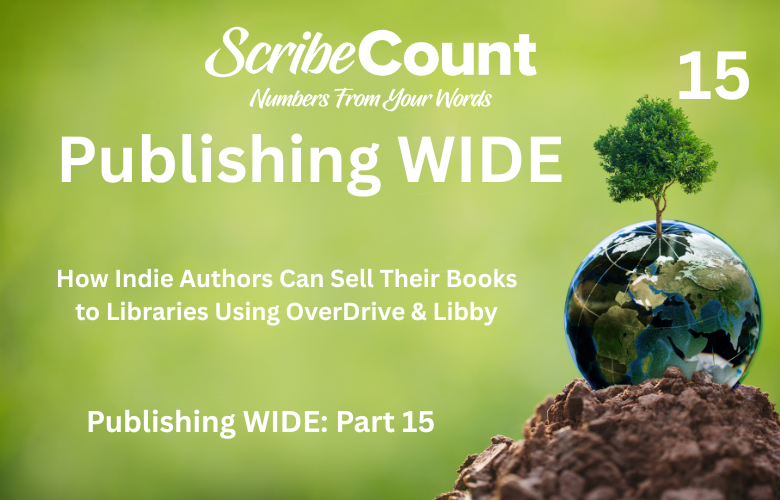OverDrive/Libby for Indie Authors
OverDrive and its reader-facing companion app Libby offer indie authors direct access to tens of thousands of libraries in over 100 countries, making them key players in the “wide” publishing landscape. While many associate library distribution with traditional publishers, platforms like OverDrive are increasingly accessible to independent authors through select partners. With millions of active readers accessing content via Libby and thousands of library systems buying titles annually, the potential reach is immense.
It’s estimated that hundreds of thousands of indie titles now circulate in the OverDrive catalog via aggregators like Draft2Digital, Smashwords, and Kobo Writing Life. If your goal is to make your book available where library patrons are already borrowing and reading digital content, OverDrive is essential.

Platform History: From CDs to the Digital Library Revolution
Founded in 1986, OverDrive began as a digital document conversion company but pivoted sharply in the early 2000s to focus on digital media for libraries. As ebooks and audiobooks gained traction, OverDrive partnered with major publishers and library systems to distribute content electronically.
Its acquisition by Rakuten in 2015 aligned it with Kobo, and in 2020, it was sold to investment firm KKR. Today, OverDrive serves over 88,000 libraries and schools worldwide. In 2017, the Libby app was launched, giving library patrons an intuitive interface for borrowing and reading books on the go—further extending the visibility of titles in the OverDrive catalog.
How OverDrive Fits in a WIDE Strategy
In Wide for the Win, Mark Leslie Lefebvre emphasizes the importance of libraries for discoverability and non-retail revenue. OverDrive fits seamlessly into a wide publishing approach by putting your book where traditional buyers aren’t: public libraries, school libraries, and academic institutions.
Authors distributing to OverDrive benefit from:
-
Non-retail revenue: Libraries pay a different pricing model, often higher than consumer retail.
-
Long-tail visibility: Library purchases remain active in their systems for years.
-
Community engagement: Libraries host local author events, readings, and book clubs.
-
Exclusive discoverability: Readers who don't buy books may still read yours via Libby.
What OverDrive Offers Indie Authors
While OverDrive doesn’t allow direct uploads from individual authors, it supports indie content through aggregation platforms like Draft2Digital, Smashwords, StreetLib, and Kobo Writing Life. These partners submit your book to OverDrive’s catalog, where librarians and patrons can browse, preview, and purchase for circulation.
OverDrive supports both ebooks and audiobooks, giving authors a double exposure path. If you’ve produced an audiobook through Findaway Voices, for instance, it can also be made available via OverDrive’s audiobook network.
Indie authors typically choose to “opt-in” to OverDrive during the publishing process through these platforms, enabling seamless access to the library market without any technical heavy lifting.
Terms, Royalties & Payment Structure
Because OverDrive is an aggregator-distributor channel rather than a storefront, payment structures vary depending on the model and the platform used. Here’s how it generally breaks down:
-
Royalties: Expect 40–50% of the library price set on platforms like Draft2Digital or Smashwords.
-
Payment Schedule: Varies by aggregator, typically monthly or quarterly.
-
Models Offered:
-
One Copy/One User (OC/OU): Library buys a copy, one patron at a time.
-
Metered Access: Libraries can lend the title a certain number of times or for a period (e.g., 26 checkouts or two years).
-
Cost Per Circ (CPC): Libraries pay each time your book is borrowed, great for discoverability.
-
Library prices can and should be set higher than retail, often two to three times your consumer list price, since they reflect licensing value over ownership.
Comparison Chart: OverDrive vs Other Platforms
| Feature | OverDrive (via D2D/Smashwords) | Amazon KDP Select | Kobo Writing Life | IngramSpark |
|---|---|---|---|---|
| Library Access | Yes (thousands worldwide) | No | Yes | Yes |
| Ebook + Audiobook | Yes | Ebook only | Yes | Ebook + Print |
| Royalty % (est.) | 40–50% | 35–70% | 70% | 40–50% |
| Discoverability | High (via Libby app) | High (only Amazon) | Moderate | Moderate |
| Direct Upload | No | Yes | Yes | Yes |
Marketing Through OverDrive
OverDrive’s primary marketing impact is in library discoverability, which functions differently than retail advertising. However, they offer tools authors and publishers can leverage through their aggregator.
-
Library Catalog Listings: Simply being listed in OverDrive means your book can be discovered by librarians, who curate their collections.
-
Promotions via Partners: Aggregators like Smashwords and Draft2Digital offer seasonal library sales (e.g., Smashwords Library Sale) where your book can be discounted for library acquisition.
-
Cost Per Circ as a “Sampler”: When using the CPC model, libraries take less financial risk and are more likely to try out indie titles. Each borrow increases your exposure.
-
Author Metadata Optimization: Make your author bio, categories, and keywords strong and accurate in your aggregator dashboard—this improves discoverability inside Libby.
There’s no dashboard for authors inside OverDrive itself, but making the most of your aggregator's metadata and opting in to relevant promotions is the best way to be seen.
Pros and Cons of Using OverDrive
Pros:
-
Access to thousands of libraries worldwide.
-
Significant discoverability via the Libby app.
-
High-priced library sales offer good royalty potential.
-
No exclusivity or DRM issues when distributing via aggregators.
-
Ebooks and audiobooks supported.
Cons:
-
No direct author upload; must go through aggregator.
-
Payment and royalty terms vary by partner.
-
No direct marketing tools or analytics from OverDrive.
-
Must rely on librarian purchases or CPC usage for earnings.
ScribeCount Integration with OverDrive
One of the strongest benefits of using OverDrive via Draft2Digital or Smashwords is that it integrates cleanly with ScribeCount. ScribeCount tracks OverDrive earnings as part of your overall wide dashboard, consolidating revenue reports from all your platforms in one place.
This visibility is crucial because OverDrive’s reports via aggregators are often delayed or buried in summary statements. With ScribeCount, you get easy-to-read charts and graphs, helping you track which library channels are performing and what genres are most popular in that ecosystem.
Conclusion
For authors committed to going wide, OverDrive and Libby are essential channels. They provide long-term visibility, exposure to non-retail readers, and access to higher-value library sales. While you can’t upload directly, the process through trusted partners like Draft2Digital and Smashwords makes library distribution simple and rewarding.
With Libby growing in popularity and library systems expanding their ebook budgets, now is the time to make sure your book is available through this powerful network. Combined with ScribeCount tracking and smart aggregator settings, OverDrive becomes not just a sales channel, but a discoverability powerhouse in your indie author strategy.
